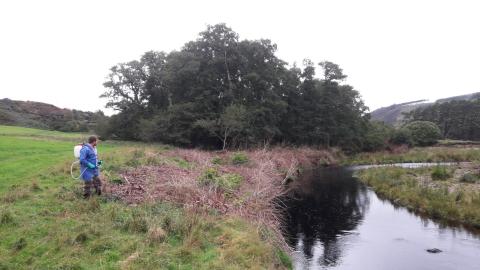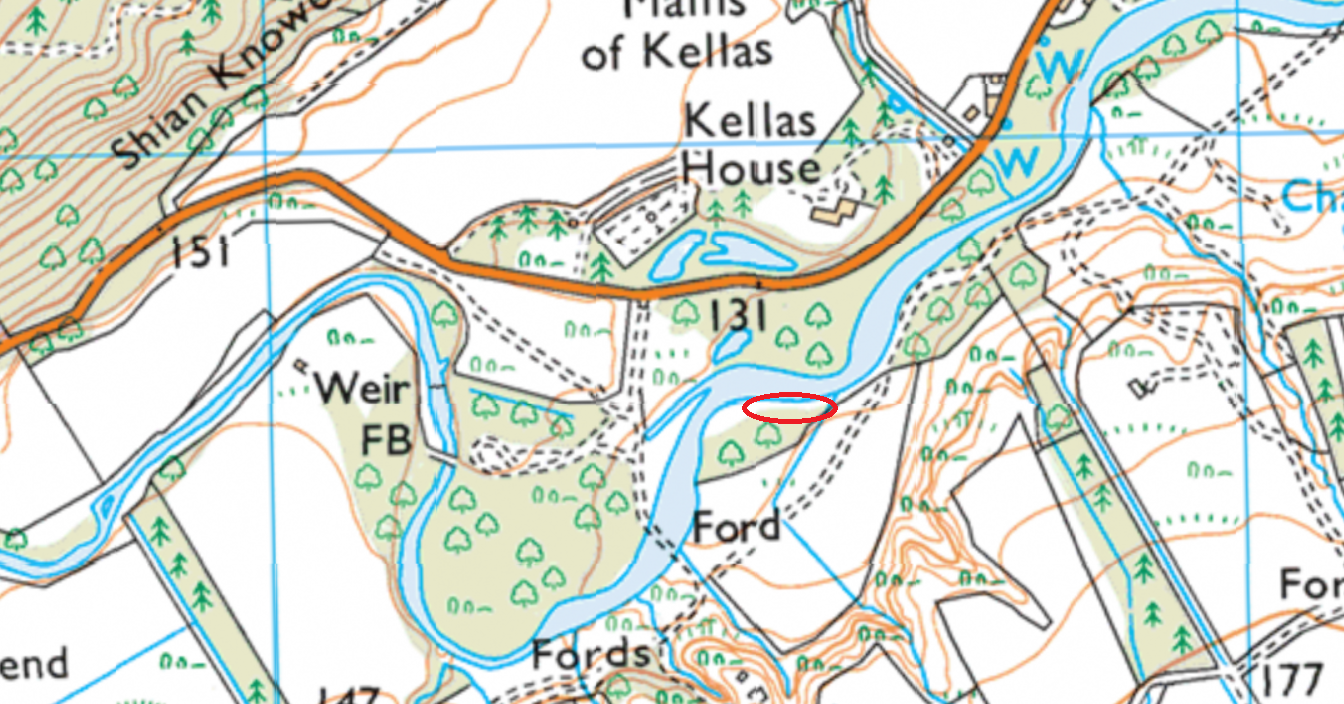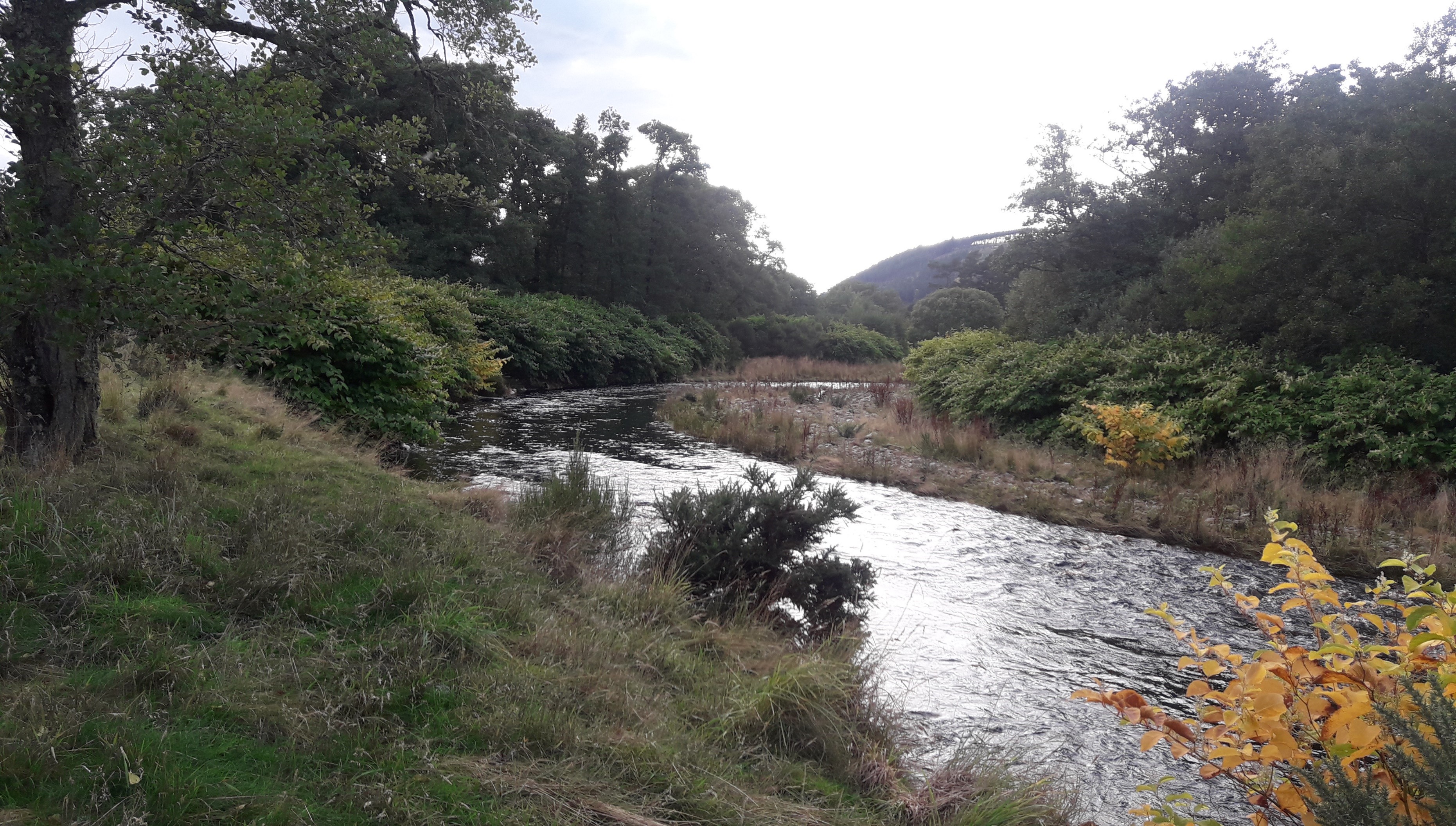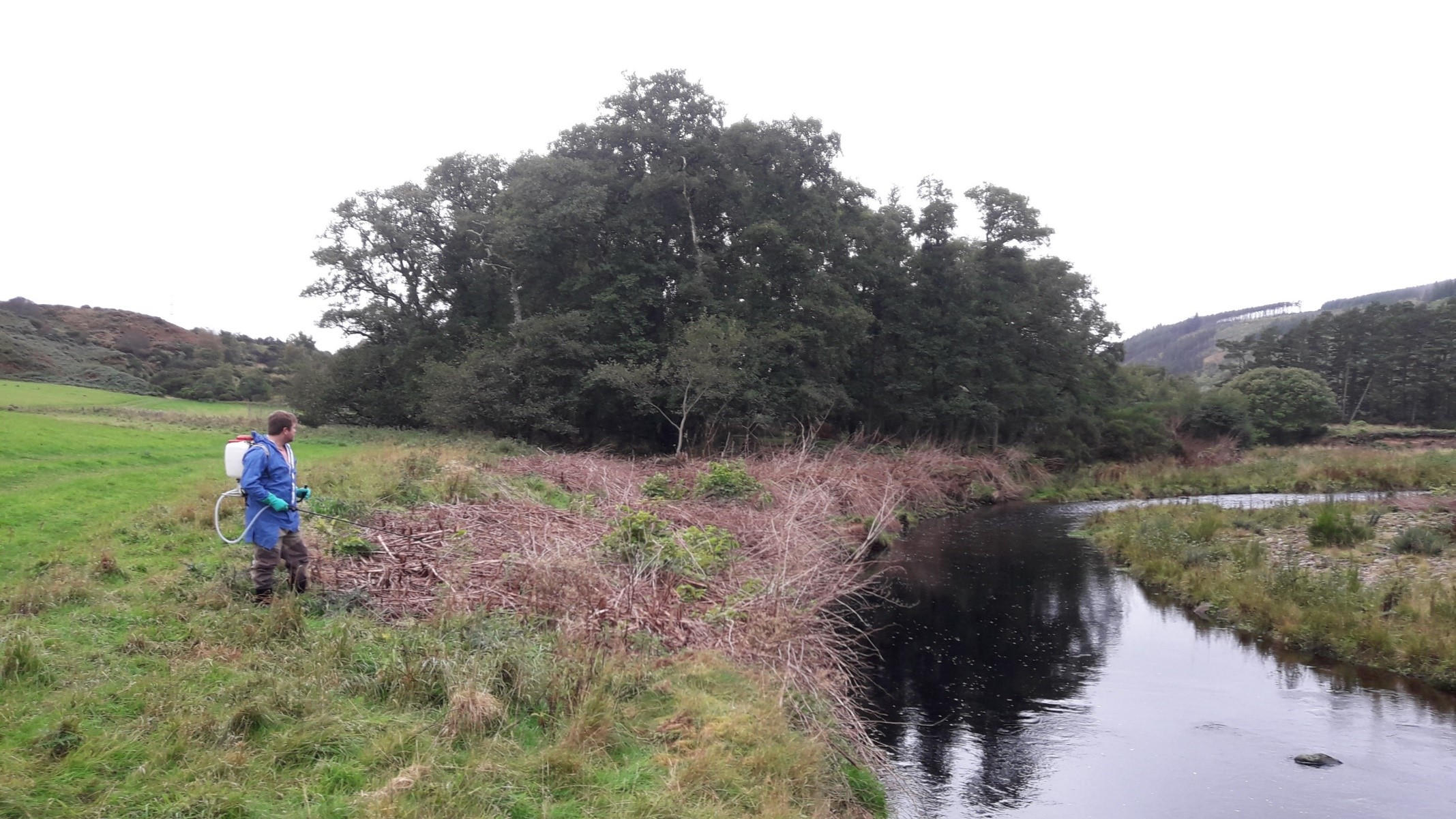Japanese knotweed control - Kellas Estate, River Lossie

Summary
Kellas Estate, on the River Lossie in Moray, marks the upstream limit of high density invasive non-native plant species – particularly Japanese knotweed - in the catchment. Whilst some further stands exist upstream these are sporadic, isolated and under management control. At Kellas Estate, Japanese knotweed, and other knotweed species, start to form large, contiguous stands which dominate the river bank and adjoining riparian woodlands.
This growth of Japanese knotweed has led to a substantial loss of biodiversity, compromised river bank stability and provided a source to spread the plant further downstream.
Kellas Estate, as with many estate houses, historically planted Japanese knotweed around ornamental ponds and gardens. These plants then spread from these planted locations to the wider countryside and riverbanks. Whilst Kellas Estate are proactive in managing Japanese knotweed on their land the scale of the problem was proving challenging to manage. Following surveys in 2018 and 2019 the Scottish Invasive Species Initiative and Findhorn, Nairn and Lossie Rivers Trust have worked with the estate in 2020 and 2021 to treat Japanese knotweed stands along the river bank.
Based on annual survey results and records of annual control effort and chemical volume applied this control has significantly reduced the abundance of Japanese knotweed present and highlights how effective Japanese knotweed treatment can be in the short term on a single specific stand.
Further monitoring and control work will be undertaken by the Scottish Invasive Species Initiative in 2022. Alongside this work discussions will take place with Kellas Estate to seek to agree and transfer future control responsibilities with and to the estate.
1. Site description
This Kellas Estate site lies on the River Lossie just upstream from the settlement of Kellas and approximately 4km downstream from the village of Dallas in Moray. The small stand of Japanese knotweed being controlled extends for approximately 150m along the right bank, is 8-20m wide and is located at grid reference NJ 165 537. The site location is shown in Map 1.
The site is owned by Kellas Estate and the surrounding area is a mixture of riparian woodland, made up of mostly oak, alder and willow, giving way to managed grassland downstream.
Within the Scottish Invasive Species Initiative partnership the Lossie catchment is covered by the Findhorn, Nairn and Lossie Rivers Trust.
Map 1: Location of Japanese knotweed control site on Kellas Estate, River Lossie

2. Background
Whilst Japanese knotweed is present upstream of this control location on Kellas Estate such plants are not common and are under management control. This Kellas Estate site location was identified in surveys by Scottish Invasive Species Initiative staff in 2018 as the most upstream point on the Lossie catchment where the plant becomes abundant, dominates the riparian environment, outcompetes native flora and blocks access to the river.
Japanese knotweed is the dominant plant species along much of the River Lossie course below this point. Therefore, it was essential to start work at Kellas Estate (before moving downstream) to remove this source population and prevent downstream re-infestation from this upstream source. Working in this systematic way allows control work downstream to be more effective and worthwhile.
Kellas Estate have been supportive of this approach and, in addition, have committed to undertaking control work away from the river.
Japanese knotweed has spread into and become established in the wider countryside and along river banks from original ornamental garden plantings.
3. Management works
The stand of knotweed was treated for the first time in 2020 using foliar spray. Stem injection is an effective way of treating Japanese knotweed on a small scale but we have found foliar spraying to be as effective and far more time and chemical efficient on larger stands. As the stands being dealt with at Kellas Estate are measured in hundreds of meters foliar spray was deemed the most suitable approach.
Timing is key when treating Japanese knotweed, it should be treated later in the year when the biomechanics of the plant shift focus from ‘growth’ to ‘store’. This greatly improves the efficacy of the chemical as translocation within the plant to the rhizome is quicker and so delivers better and more effective control. This shift generally occurs in about August, once the flowers have appeared.
Using extendable lances and approaching the stand from both sides the team were able to create paths in to the middle, taking care not to snap stems, and treat the entire stand in one treatment session.
Table 1 below shows a summary of the control treatments.
Table 1 – Summary of control treatments at Kellas Estate
| Year | Invasive species being controlled | Who completed control work | Control work - date and method |
| 2020 | Japanese knotweed | Project & project partner staff | 29/09/2020 - foliar spray |
| 2021 | Japanese knotweed | Project & project partner staff | 04/10/2021 - foliar spray |
4. Results
4.1 Invasive species abundance
Monitoring was undertaken at the site in 2018, 2019 and 2020 prior to control activities taking place – in all of these years Japanese knotweed was recorded as ‘dominant’. Following initial treatment in 2020 the overall abundance of Japanese knotweed decreased from ‘dominant’ to ‘rare’ in 2021.
The abundance of invasive species was measured using the DAFOR scale*. The recorded abundances are shown in Table 2 below.
The few plants that remained in 2021 were severely stunted suggesting that the rhizome had been sufficiently weakened so as to prevent meaningful regrowth. These stunted plants were resprayed to ensure that the remaining rhizome does not have time to recover.
This abundance change was also observed by change on the ground (see Figures 1a and 1b).
Table 2 - Annual Japanese knotweed abundance from surveys (2018 – 2021) at Kellas Estate
| Kellas Estate control year | 2018 | 2019 | 2020 | 2021 |
| Abundance (DAFOR*) | D | D | D | R |
* - DAFOR Scale of abundance – D = Dominant (50 – 100% cover), A = Abundant (30 – 50% cover), F = Frequent (15 – 30% cover), O = Occasional (5 – 15 % cover), R = Rare (<5% cover)


Figure 1 and 2, Kellas Japanese Knotweed site, before and after.
4.2 Chemical usage
In both years of treatment glyphosate (Roundup ProVantage 480mg/l) was applied by backpack sprayer as a foliar spray at a concentration of 20ml per litre. The volume of glyphosate used per year is shown in Table 3 (below).
Table 3 – Volume of glyphosate used to control Japanese knotweed (2020 and 2021) at Kellas Estate
| Kellas Estate control year | 2020 | 2021 |
| Glyphosate used (L) | 1.6 | 0.1 |
4.3 People effort
Control work was undertaken by staff from the project and the Findhorn, Nairn and Lossie Rivers Trust in 2020 and 2021. Table 4 (below) shows the effort in terms of hours of control work spent on the site.
Table 4 – People hours used to control Japanese knotweed (2020 and 2021) at Kellas Estate
| Kellas Estate control year | 2020 | 2021 |
| Control hours | 6.5 | 0.25 |
5. Conclusions and Progress Made
Work to control Japanese knotweed at Kellas Estate since 2020 has significantly reduced both the abundance of the plant at the site and the time and chemical volume required to maintain control in 2021.
This is demonstrated by the change in abundance of the plant (see Figures 1a and 1b) – which show the large reduction of Japanese knotweed present following the initial treatment in 2020 – and in the DAFOR scores at the site (see Table 2) which recorded abundance reduced from ‘dominant’ in 2018, 2019 and 2020 to ‘rare’ in 2021 after control.
Progress is also shown in terms of both the hours of work required to treat Japanese knotweed at the site and the chemical volume used in these treatment (see Tables 3 and 4). Hours required to control, and the chemical volume used to deliver this control, reduced by 96% and 94% between 2020 and 2021 respectively.
Observed regrowth has taken the form of a few stunted and weakened plants which would require several growing seasons to fully recover and start to recolonise the site again. However, these plants can be subject to ongoing annual control to continue to suppress regrowth and ultimately eradicate the plant from the site.
Re-colonisation by native flora was limited in 2021 due to the nature of the complete control delivered in 2020. As the site was more selectively treated in 2021 – with Japanese knotweed foliage being spot treated in 2021 - we would expect to see a significant native plant species regrowth in 2022.
In part this particular stand was chosen as a location to demonstrate the effectiveness of foliar spraying glyphosate on Japanese knotweed to local estate workers and contractors, who were more accustomed to different chemical and control methods. The emerging results provide confidence that this approach is effective in Japanese knotweed control and should be replicated.
6. Next Steps
hilst the density and abundance of Japanese knotweed plants at the Kellas Estates site has decreased substantially, some weakened plants remain which left untreated would gradually re-infest the site. Therefore, control and monitoring at the site should be continued until eradication is achieved and confirmed.
In 2022 the site will be visited, assessed and, if required, treated by Scottish Invasive Species Initiative staff.
Alongside this control discussions will be initiated with Kellas Estate to seek to transfer future management responsibility for the site to them now that the problem has been so markedly reduced and is more locally manageable.
The eradication of Japanese knotweed from this site is an achievable objective within the next 2-3 years. This will also support the control of Japanese knotweed lower in the catchment as this source population will have been removed.
Further information
Contact: [email protected]
Website: www.invasivespecies.scot
